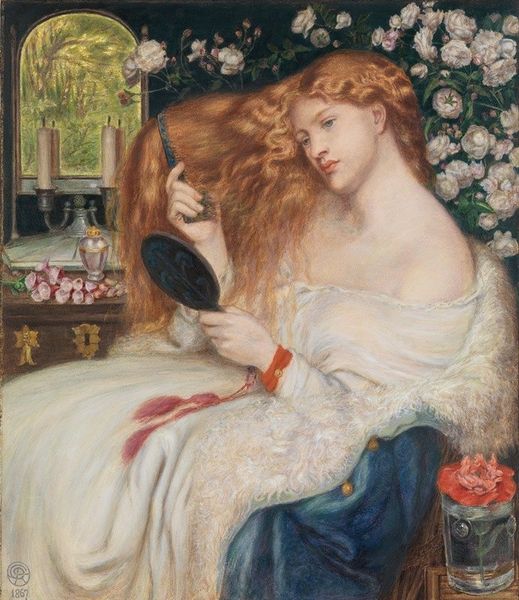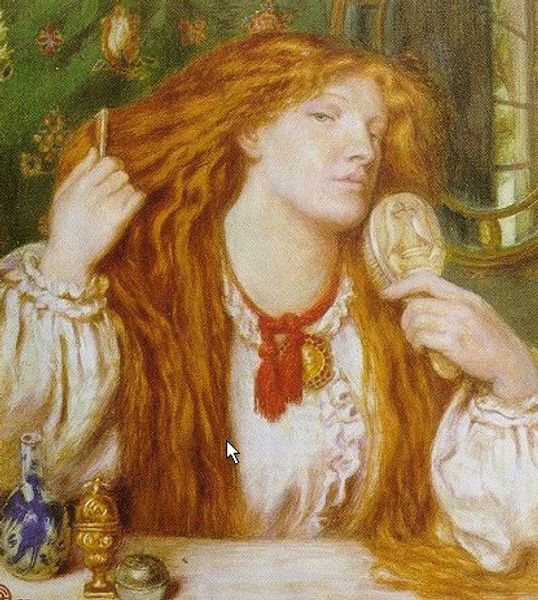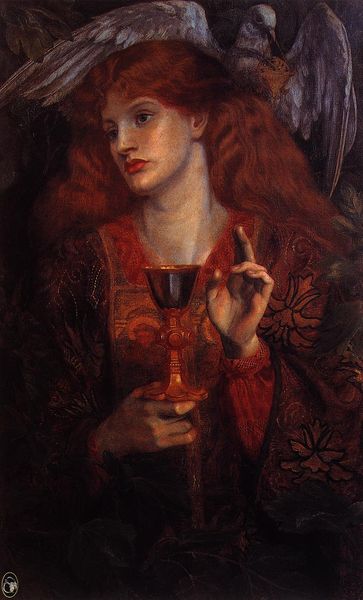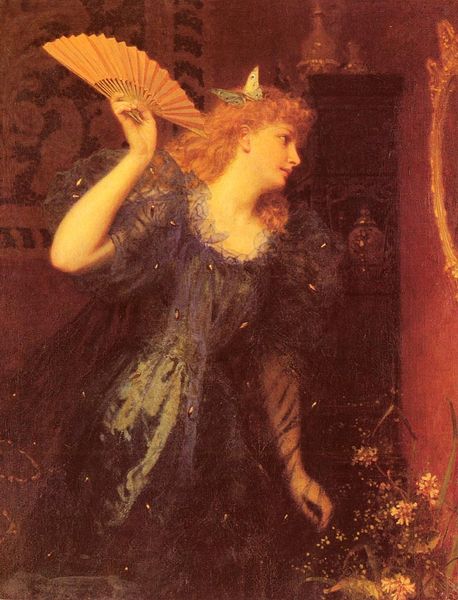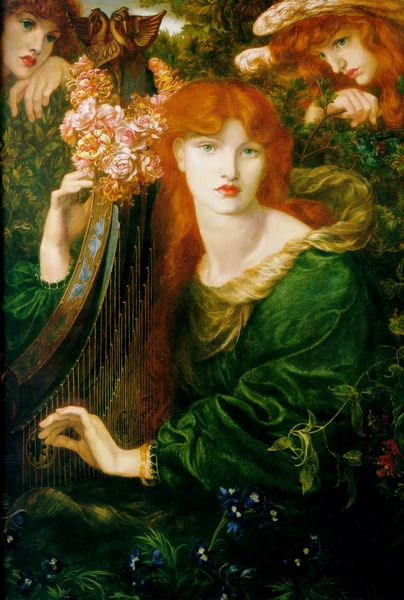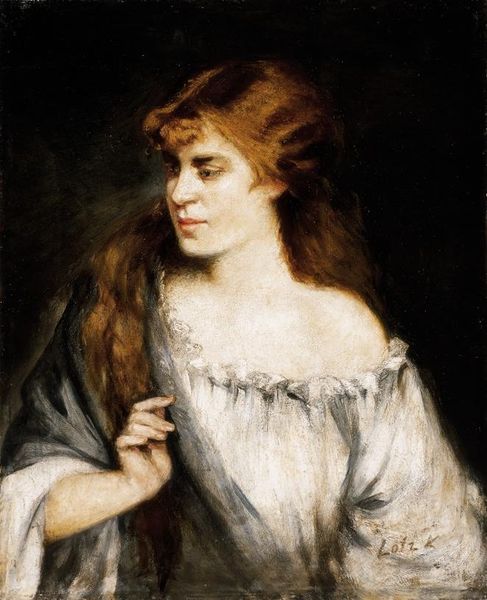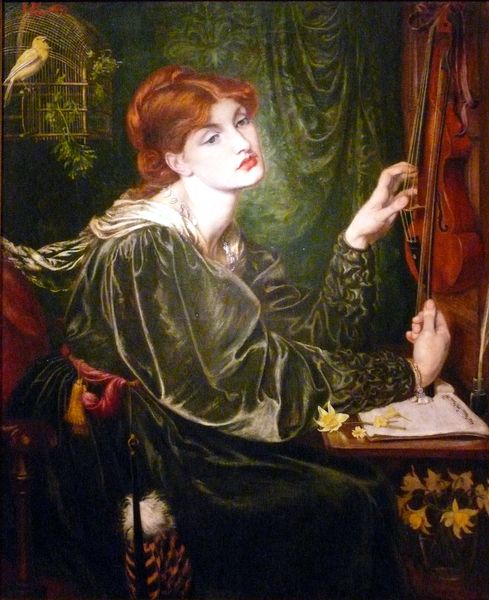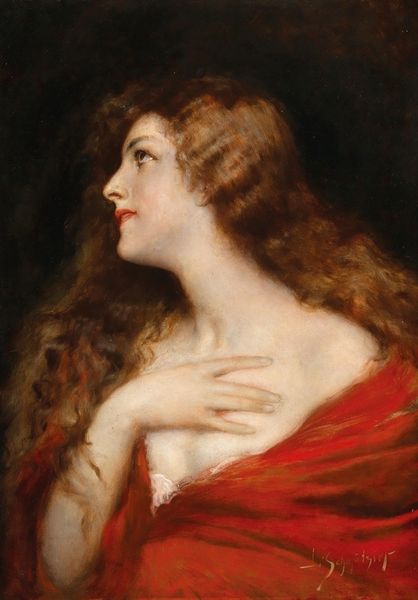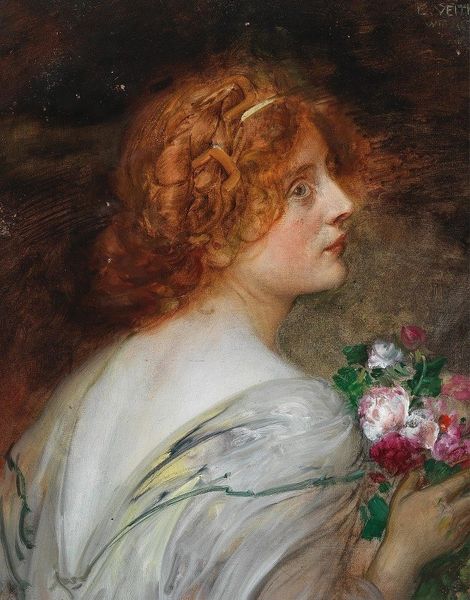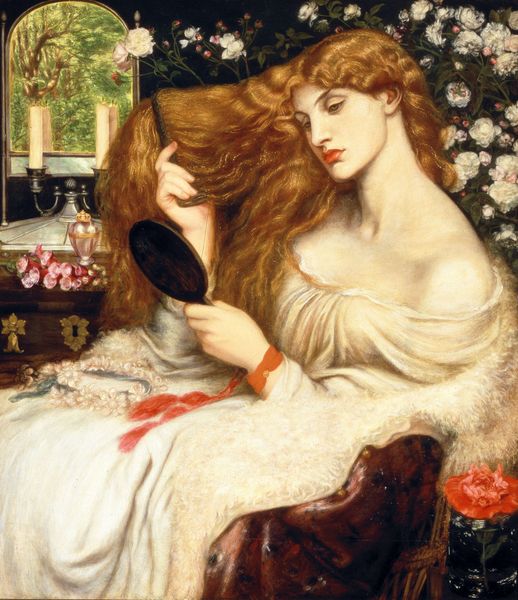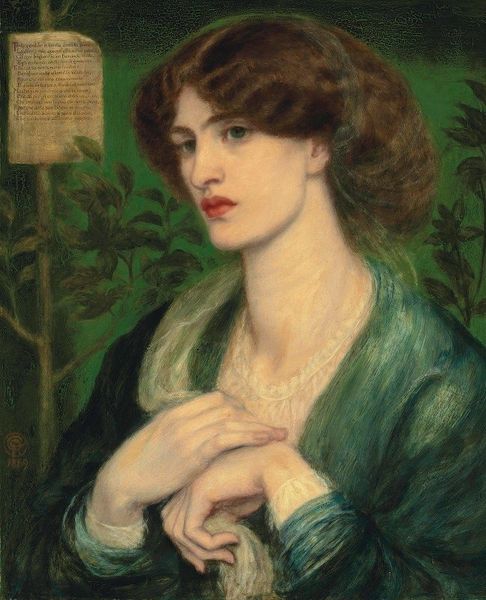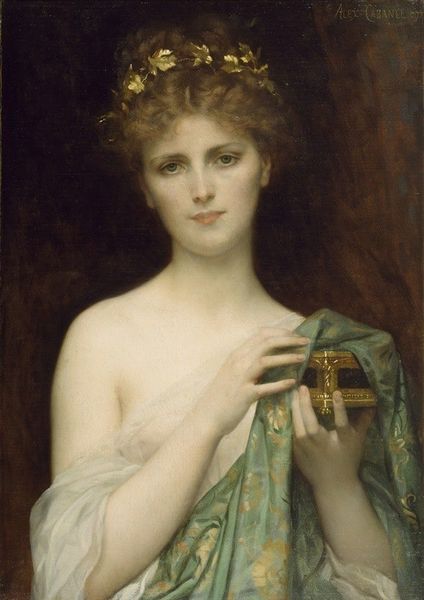
Dimensions: 38.1 x 43.2 cm
Copyright: Public domain
Curator: Standing before us is Dante Gabriel Rossetti’s "Aurelia," completed in 1879 and currently housed here at the Tate Modern. Editor: Immediately, I’m struck by the density of the oil paint – the very texture feels heavy, rich. There's a pronounced material presence; it's not just an image, it's a layered surface. Curator: It is, isn’t it? This Pre-Raphaelite fascination with color and detail lends itself to that very tactile experience. I see in Aurelia shades of what Laura Mulvey called "visual pleasure," in its male gaze of feminine representation. We can almost read her as Rossetti's romantic ideal – but let's examine the power dynamics at play, the control implicit in that act of artistic creation. Editor: I agree, and what’s telling to me is the detail rendered onto these cosmetic objects – the brush, the vanity mirror… These objects aren’t simply props but signify labour and display: they were fashioned in a factory, distributed for sale and procured, no doubt, by wealthy men or perhaps even women like this red-haired woman, who in this particular image spends an eternity applying products with that beautiful set! Curator: Exactly. The artwork invites a dialogue about women's lives, and expectations within Victorian society and what that beauty labor meant in that moment. I find myself considering how much Rossetti manipulates that presentation here, both in the literal application of pigment, and the artistic ideal that informed it. Is she subject or object, active or passive? Editor: The application of oil paint serves not merely representation, but reification. What’s so rich and dark with shadows is really the result of heavy labor on his part. Each individual hair likely demanded hours. Curator: And that obsessive quality, almost a fetishization. It asks us to explore intersectional dimensions. It prompts an examination of her identity and its construction via objectification, while at the same time suggesting the artist’s own very complex, potentially conflicted role within the work. The art embodies the artist's psyche. Editor: I concur. Even now, centuries removed, seeing those material traces of labour—Rossetti's as well as the sitter's implicit act of presenting and composing herself—still manages to stir conversations concerning value and creation. Curator: It’s this ongoing relevance and potency that make "Aurelia" so compelling, a painting, a portal into complex, lingering social discourses.
Comments
No comments
Be the first to comment and join the conversation on the ultimate creative platform.

